
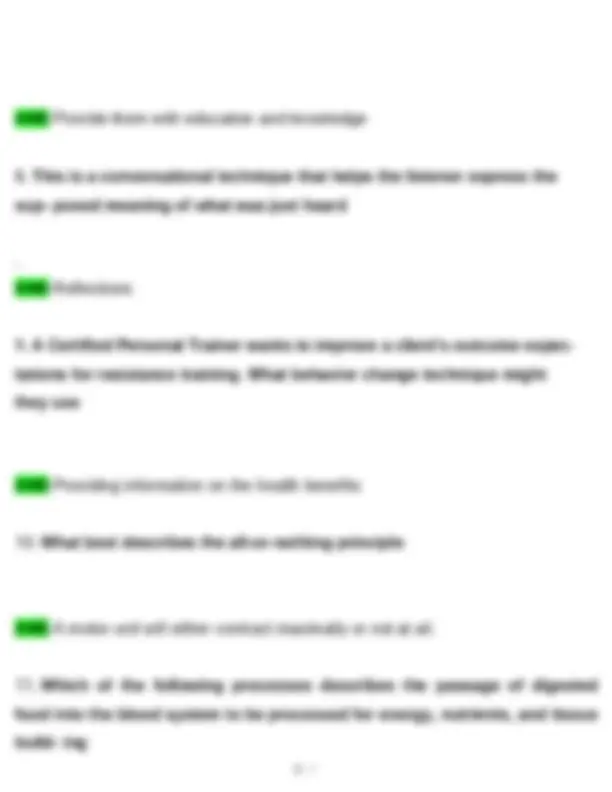
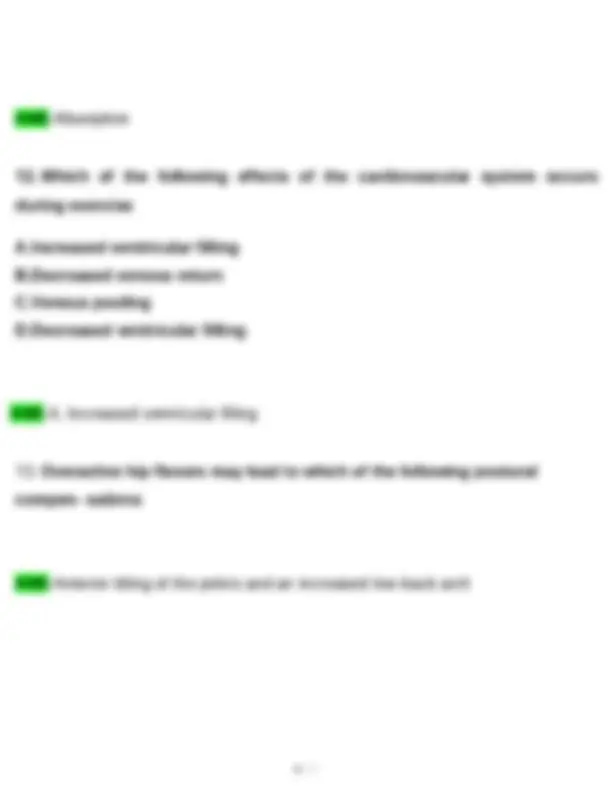
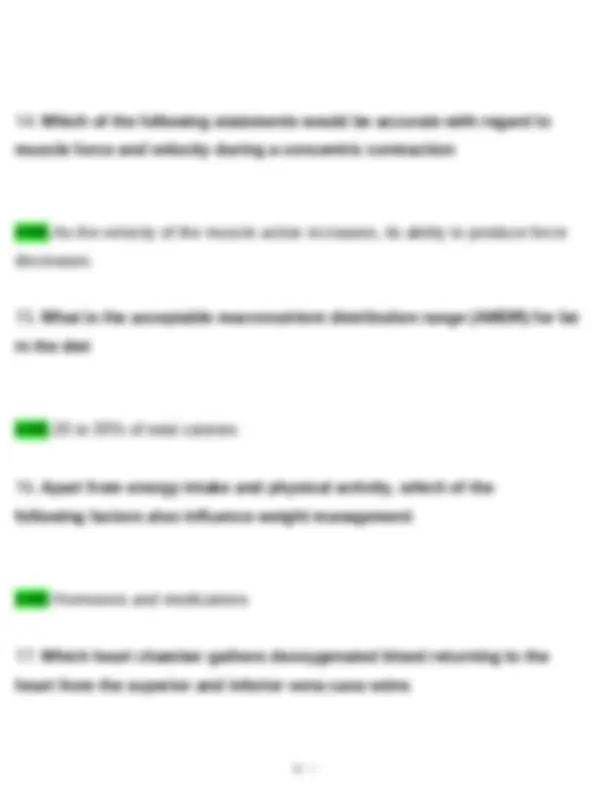
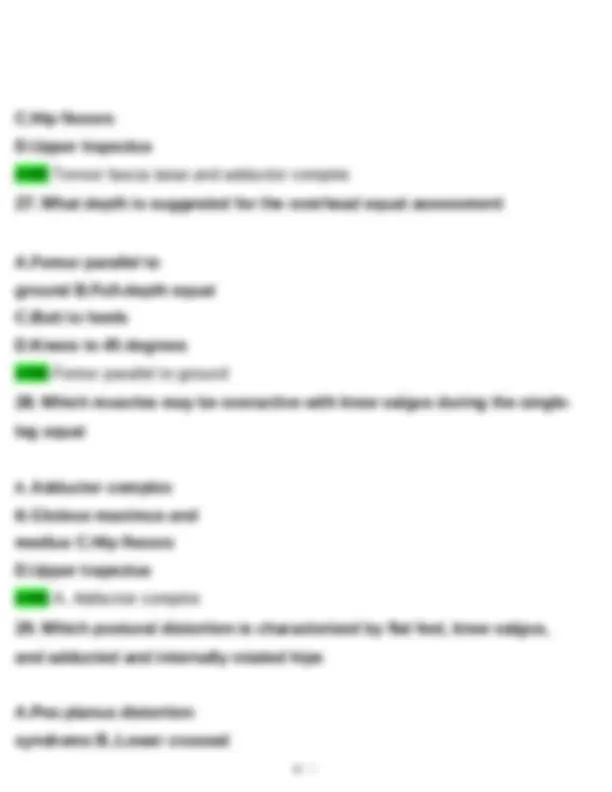
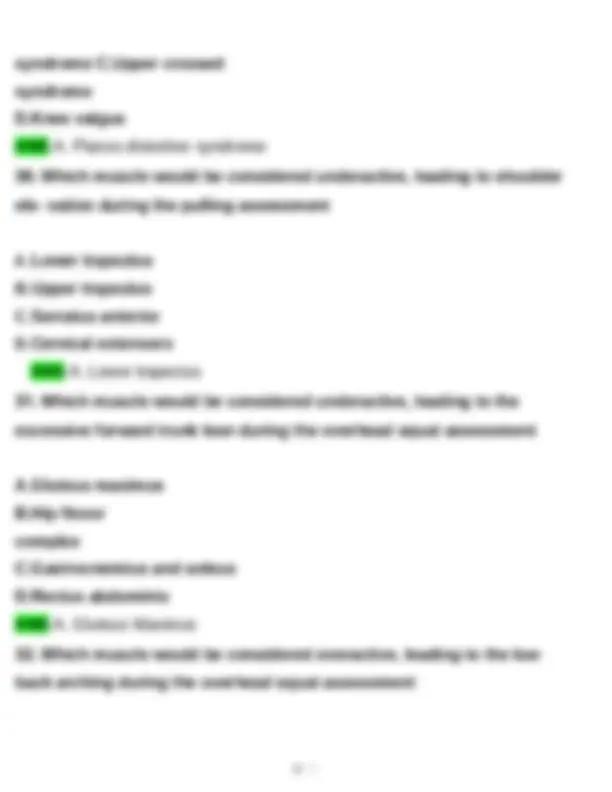
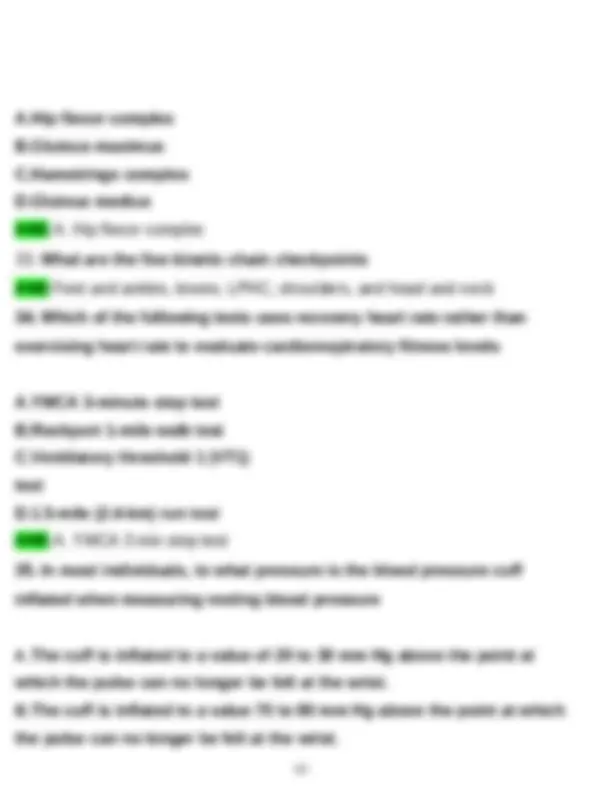
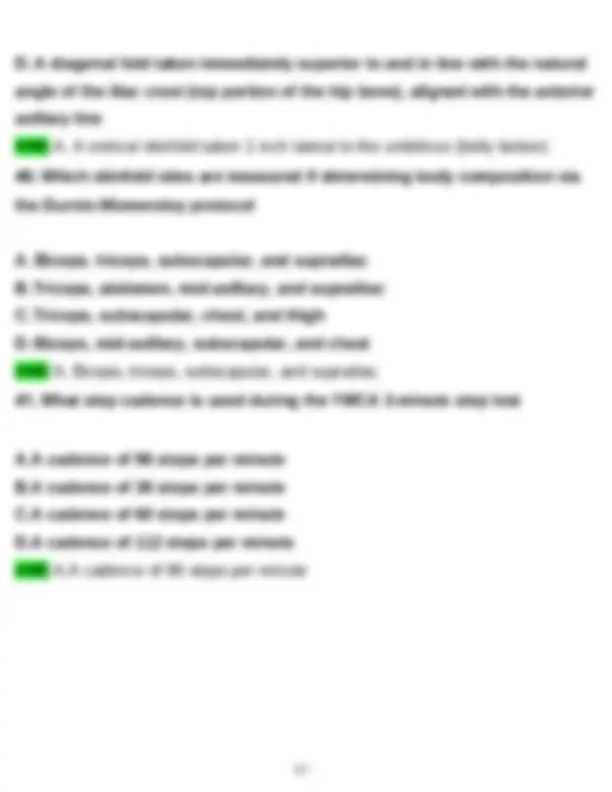
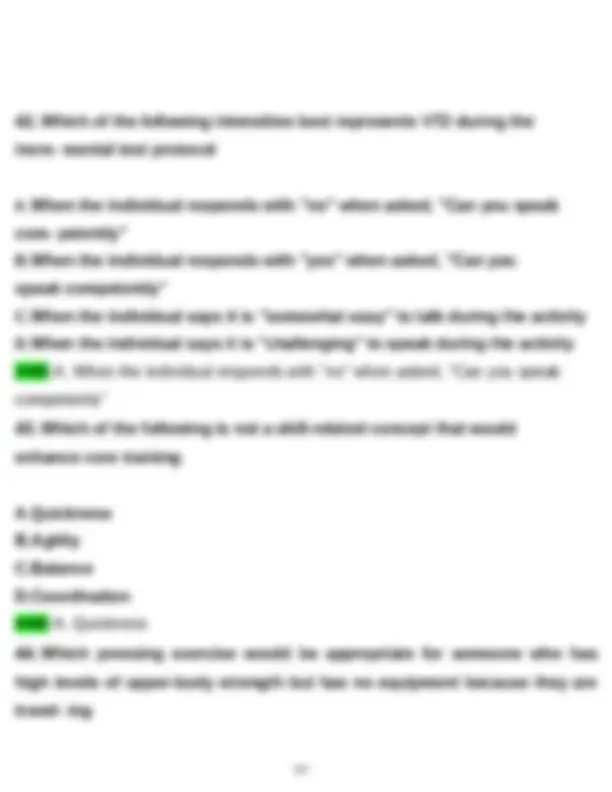
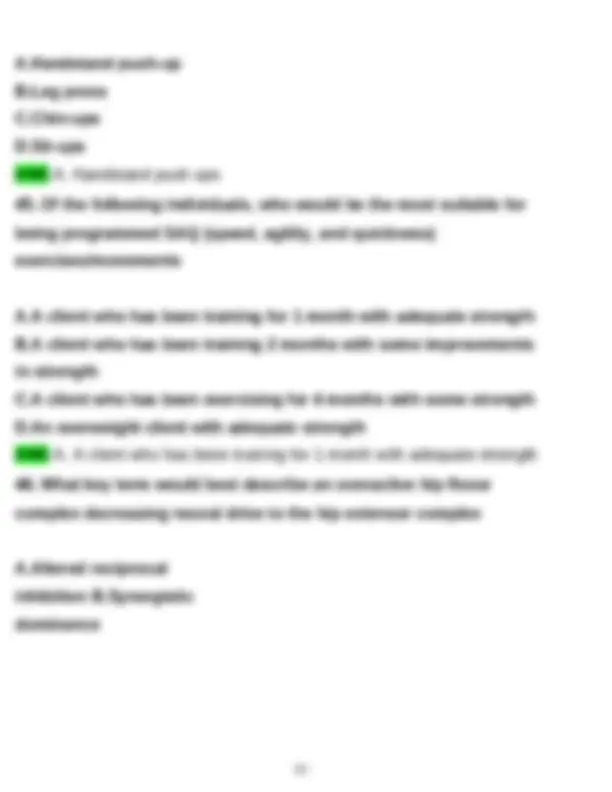
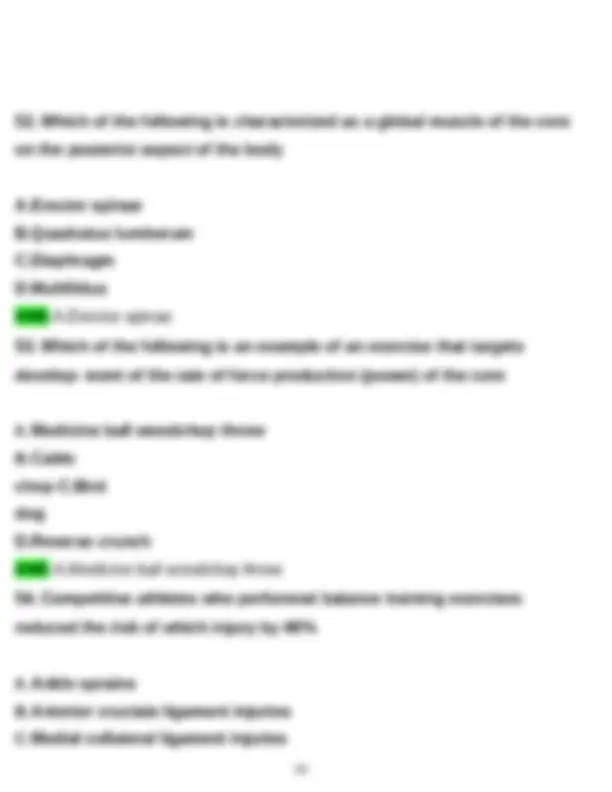
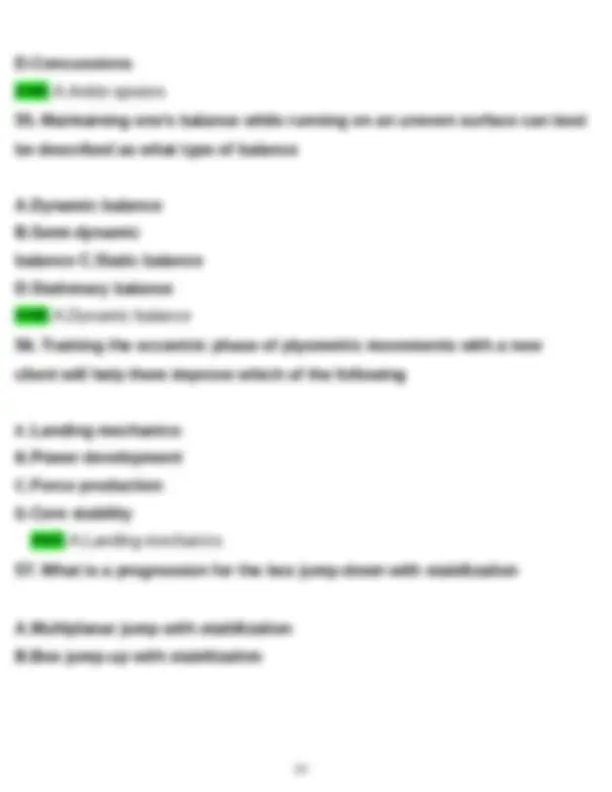
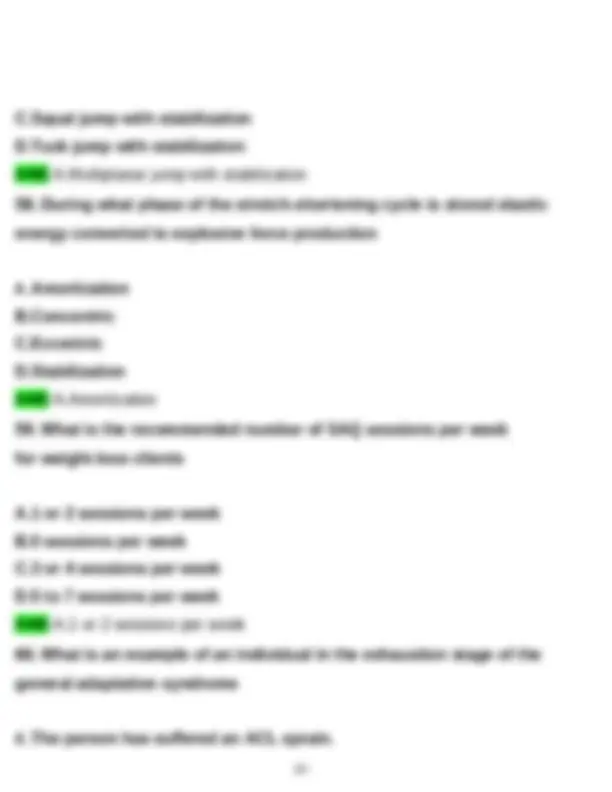
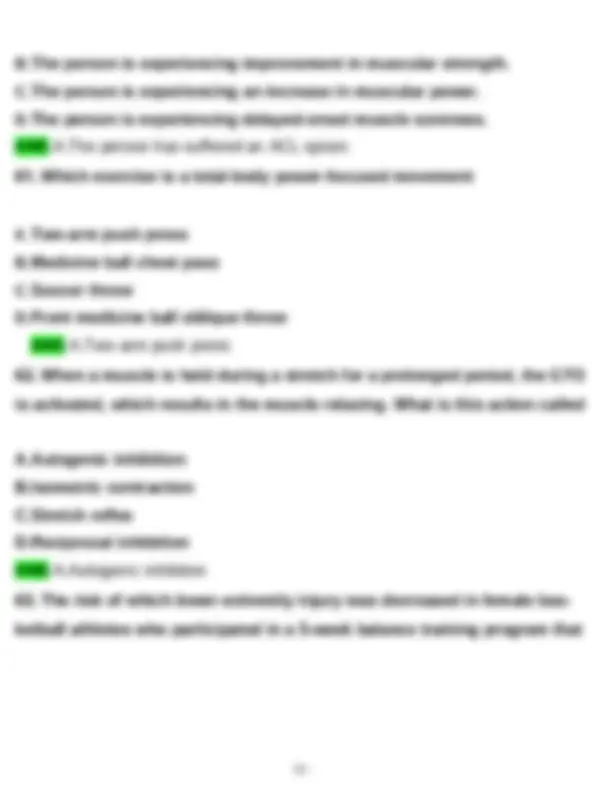
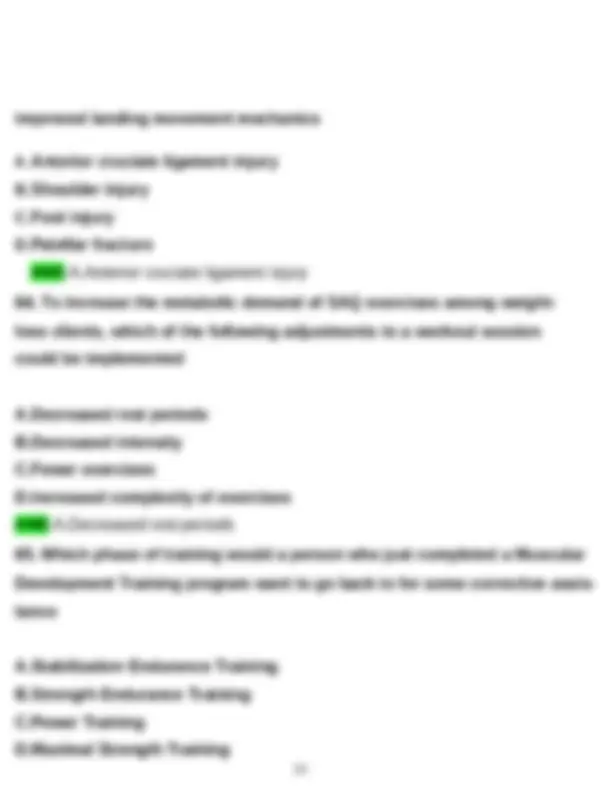
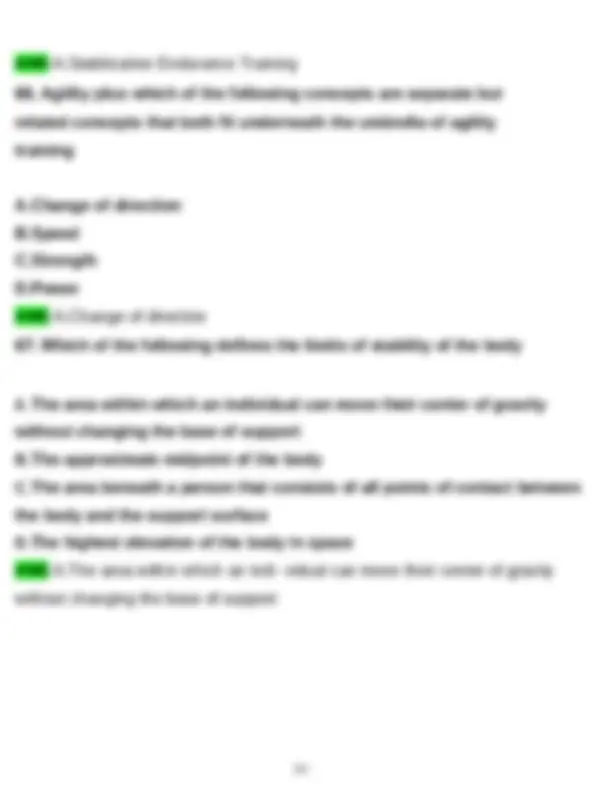
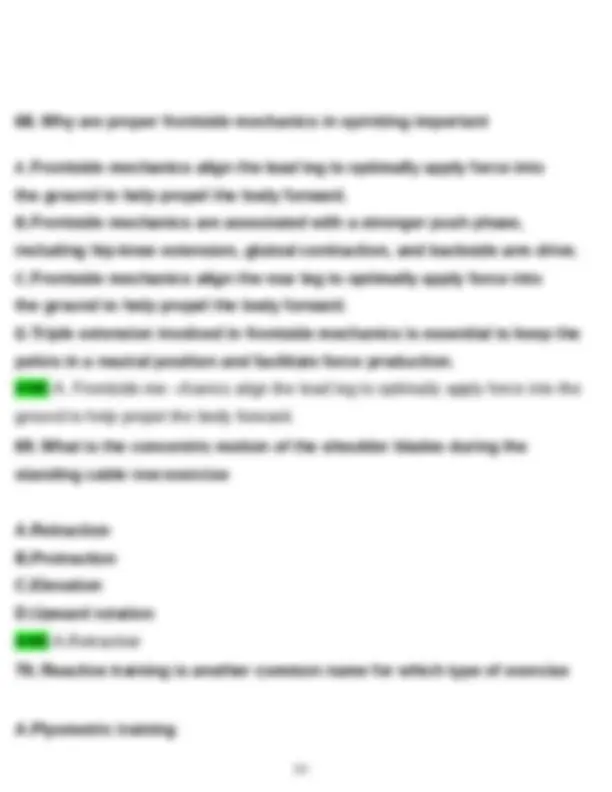
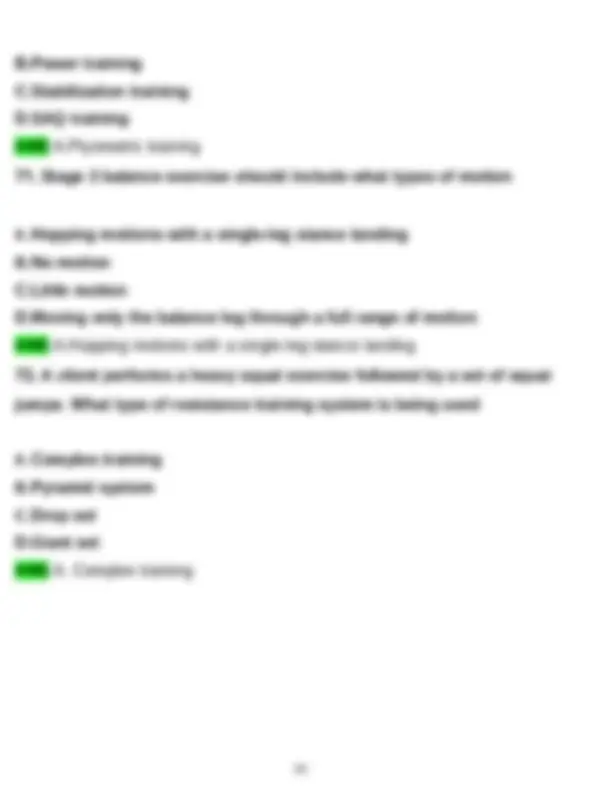
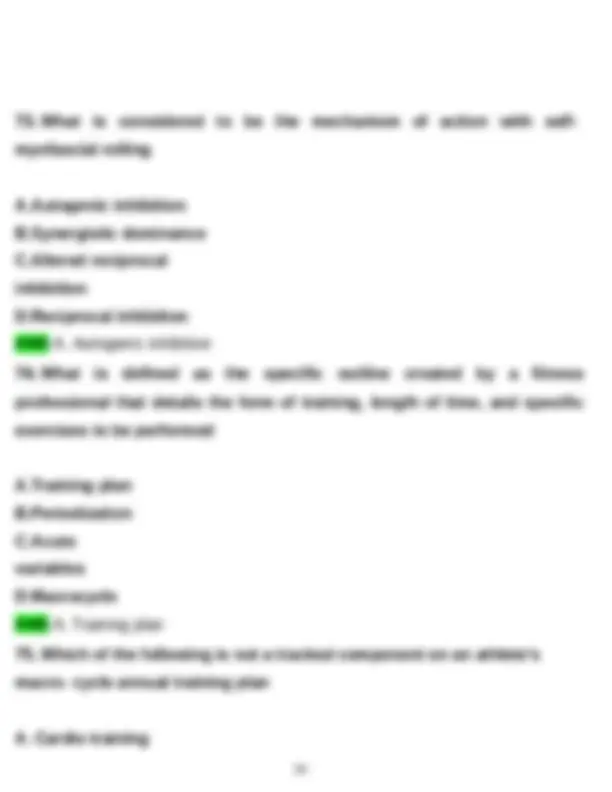
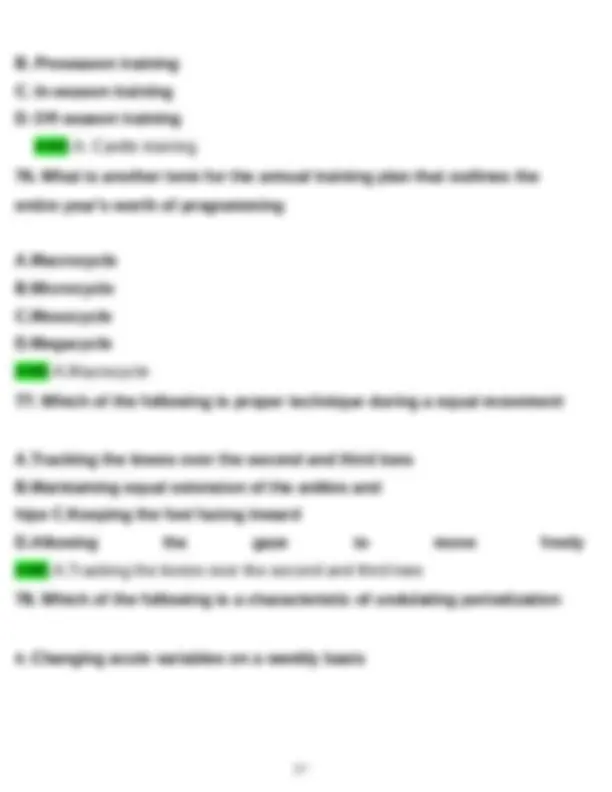
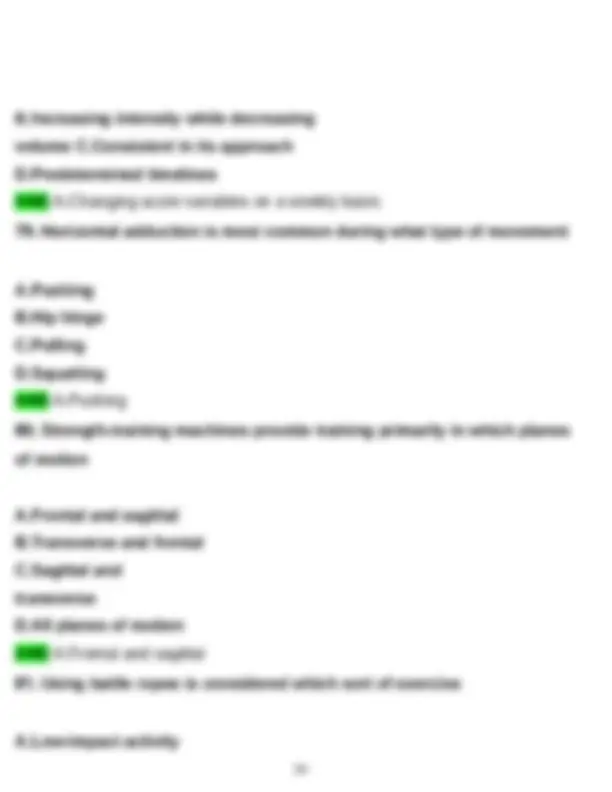
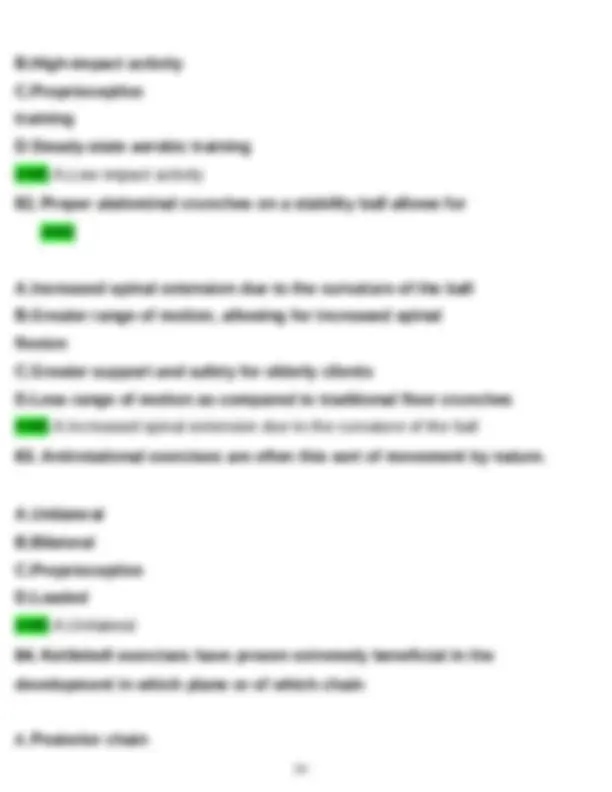
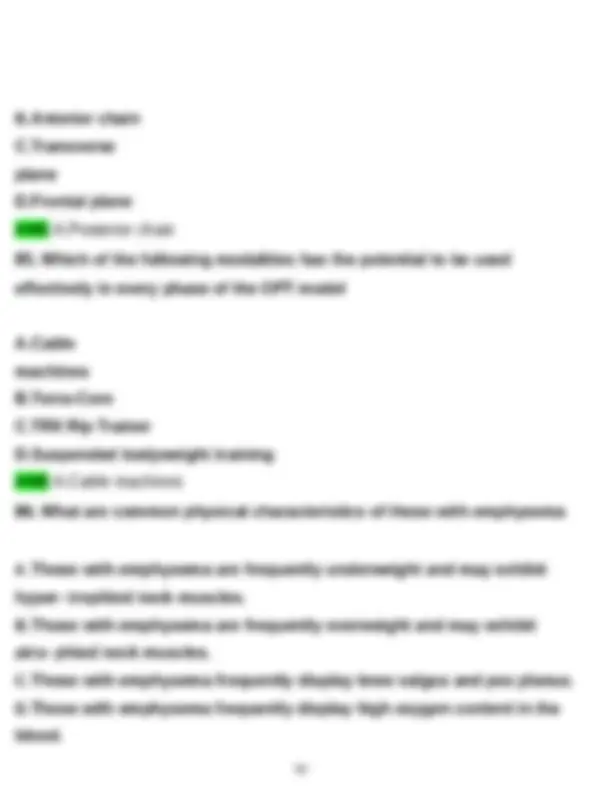
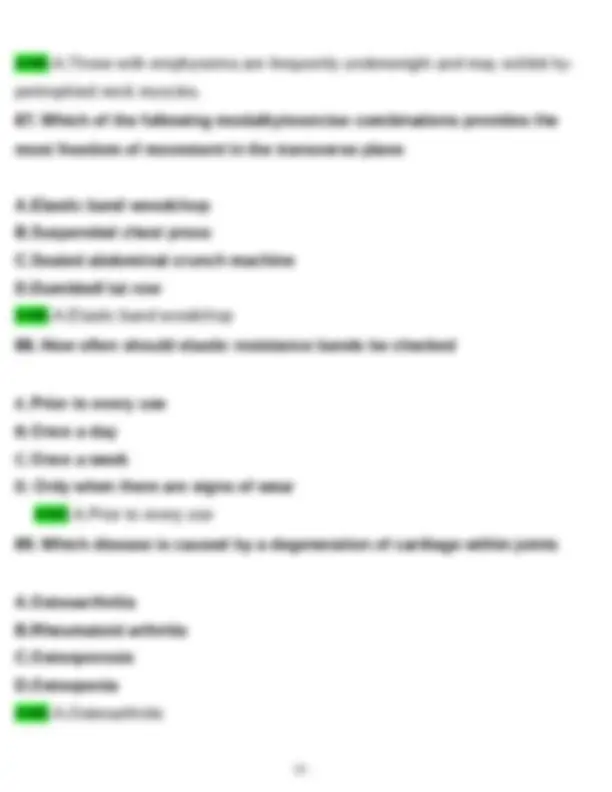
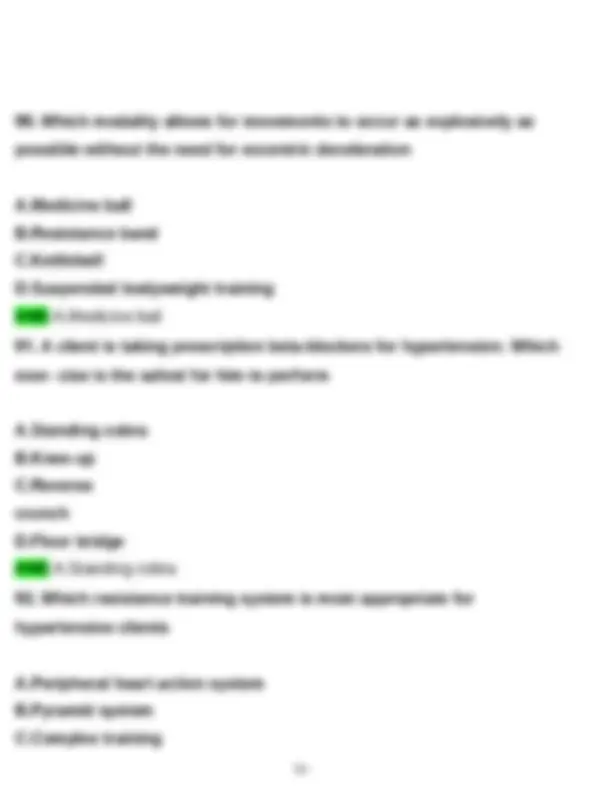
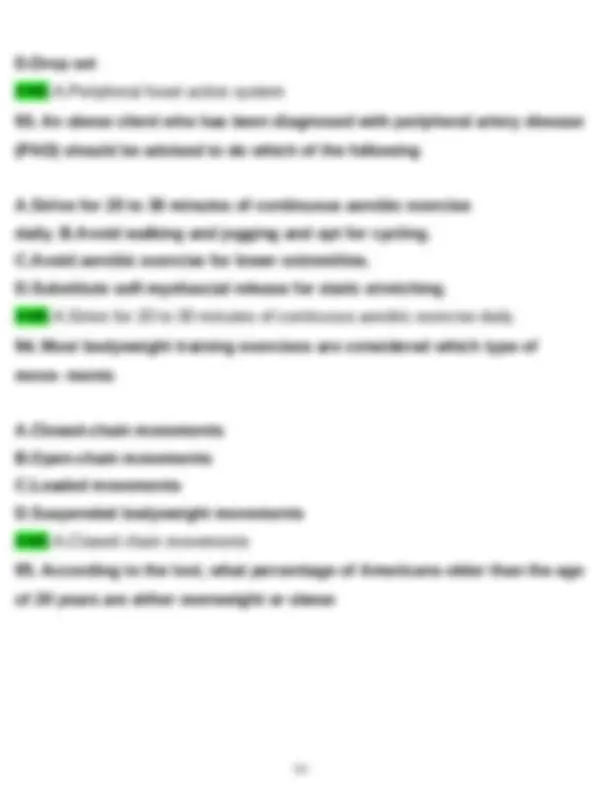
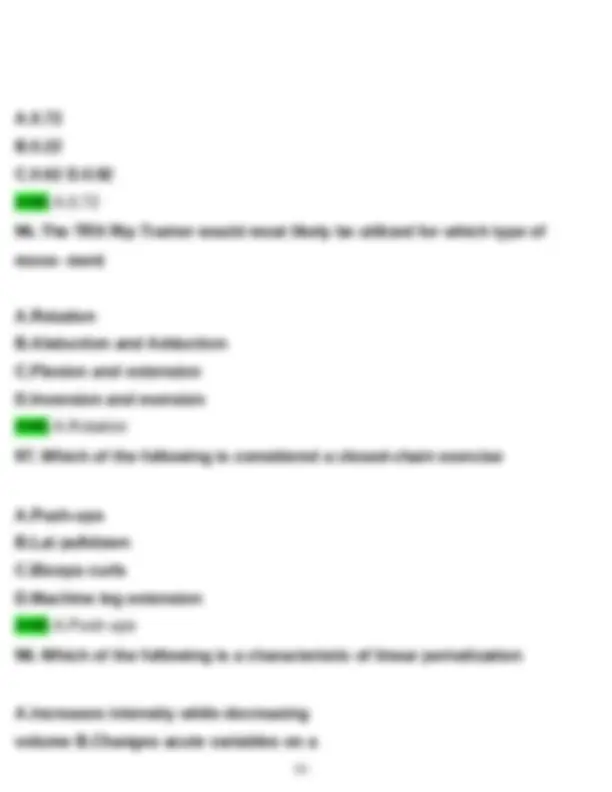
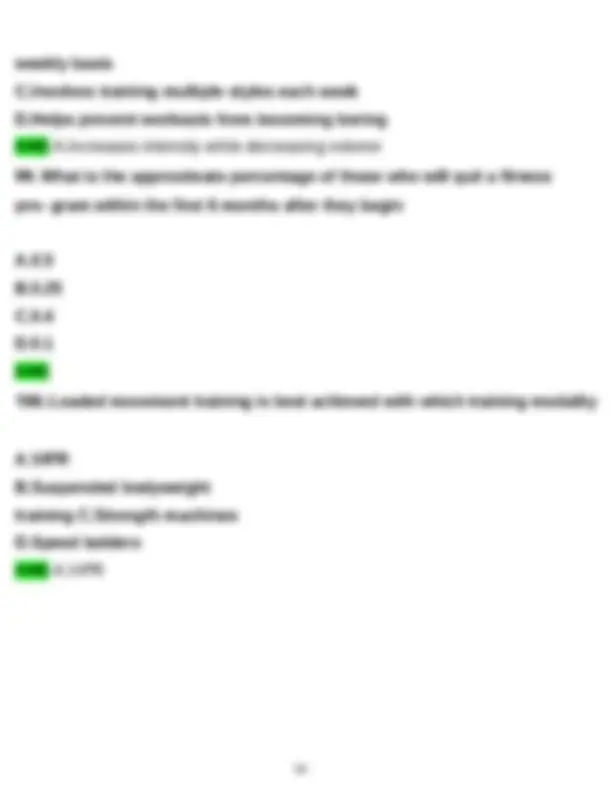


Study with the several resources on Docsity

Earn points by helping other students or get them with a premium plan


Prepare for your exams
Study with the several resources on Docsity

Earn points to download
Earn points by helping other students or get them with a premium plan
Community
Ask the community for help and clear up your study doubts
Discover the best universities in your country according to Docsity users
Free resources
Download our free guides on studying techniques, anxiety management strategies, and thesis advice from Docsity tutors
1. NASM nutrition exam study guide 2. How to prepare for NASM nutrition certification test 3. NASM nutrition exam practice questions 4. NASM certified nutrition coach exam tips 5. What to expect on NASM nutrition exam 6. NASM nutrition exam passing score requirements 7. Best resources for NASM nutrition exam preparation 8. NASM nutrition exam difficulty level 9. How long to study for NASM nutrition certification exam 10. NASM nutrition exam retake policy 11. NASM nutrition exam cost and registration process 12. NASM nutrition exam format and structure 13. NASM nutrition certification exam sample questions 14. NASM nutrition exam time limit 15. NASM nutrition exam online proctoring options 16. NASM nutrition exam calculator requirements 17. NASM nutrition exam study schedule template 18. NASM nutrition exam flashcards and mnemonics 19. NASM nutrition exam content outline breakdown 20. NASM nutrition exam vs other nutrition certifications
Typology: Exams
1 / 35

This page cannot be seen from the preview
Don't miss anything!




























that she wants to win. Which type of motivation is driving her ANS Extrinsic motivation
ANS Absorption
12. Which of the following effects of the cardiovascular system occurs during exercise A.Increased ventricular filling B.Decreased venous return C.Venous pooling D.Decreased ventricular filling ANS A. Increased ventricular filling
A.Validity B.Appropriateness C.Reliability D.Relevance ANS Validity
25. Which of the following blood pressure readings would classify an individ- ual as having stage 1 hypertension A.135/80 mm Hg B.118/78 mm Hg C.124/80 mm Hg D.143/92 mm Hg ANS A. 135/80 mm Hg 26. Which muscle(s) may be overactive with knee valgus during the overhead squat A.Tensor fascia latae and adductor complex B.Gluteus maximus and medius
C.Hip flexors D.Upper trapezius ANS Tensor fascia latae and adductor complex
27. What depth is suggested for the overhead squat assessment A.Femur parallel to ground B.Full-depth squat C.Butt to heels D.Knees to 45 degrees ANS Femur parallel to ground 28. Which muscles may be overactive with knee valgus during the single- leg squat A.Adductor complex B.Gluteus maximus and medius C.Hip flexors D.Upper trapezius ANS A. Adductor complex 29. Which postural distortion is characterized by flat feet, knee valgus, and adducted and internally rotated hips A.Pes planus distortion syndrome B..Lower crossed
A.Hip flexor complex B.Gluteus maximus C.Hamstrings complex D.Gluteus medius ANS A. Hip flexor complex
C.The cuff is inflated to a value 45 to 55 mm Hg above the point at which the pulse can no longer be felt at the wrist. D.The cuff is inflated to a value 5 to 10 mm Hg above the point at which the pulse can no longer be felt at the wrist. ANS A. The cuff is inflated to a value of 20 to 30 mm Hg above the point at which the pulse can no longer be felt at the wrist.
36. What do you visualize to detect the movement impairment of knee valgus A.The knees collapsing inward B.The knees bowing outward C.An upright trunk and knees in front of toes D.The hip shifting toward one side or the other ANS A. The knees collapsing inward 37. What term refers to the ability of a test to produce consistent and repeat- able results A.Reliability B.Relevance C.Validity D.Appropriateness ANS A.Reliability
D. A diagonal fold taken immediately superior to and in line with the natural angle of the iliac crest (top portion of the hip bone), aligned with the anterior axillary line ANS A. A vertical skinfold taken 1 inch lateral to the umbilicus (belly button)
40. Which skinfold sites are measured if determining body composition via the Durnin-Womersley protocol A. Biceps, triceps, subscapular, and suprailiac B. Triceps, abdomen, mid-axillary, and suprailiac C. Triceps, subscapular, chest, and thigh D. Biceps, mid-axillary, subscapular, and chest ANS A. Biceps, triceps, subscapular, and suprailiac 41. What step cadence is used during the YMCA 3-minute step test A.A cadence of 96 steps per minute B.A cadence of 36 steps per minute C.A cadence of 60 steps per minute D.A cadence of 112 steps per minute ANS A.A cadence of 96 steps per minute
42. Which of the following intensities best represents VT2 during the incre- mental test protocol A.When the individual responds with "no" when asked, "Can you speak com- petently" B.When the individual responds with "yes" when asked, "Can you speak competently" C.When the individual says it is "somewhat easy" to talk during the activity D.When the individual says it is "challenging" to speak during the activity ANS A. When the individual responds with "no" when asked, "Can you speak competently" 43. Which of the following is not a skill-related concept that would enhance core training A.Quickness B.Agility C.Balance D.Coordination ANS A. Quickness 44. Which pressing exercise would be appropriate for someone who has high levels of upper-body strength but has no equipment because they are travel- ing
C.Reciprocal inhibition D.Altered length-tension relationship ANS A. Altered reciprocal inhibition
47. What are two medical precautions for self-myofascial techniques A.Joint hypermobility and scoliosis B.Cancer and bleeding disorders C.Osteoporosis and uncontrolled hypertension D.Extreme discomfort/pain and rheumatoid arthritis ANS A. Joint hypermobility and scoliosis 48. Which muscle would you be targeting for SMR if you placed the roller along the front and slightly lateral (outside) part of the upper thigh (just below the pelvis) A. Tensor fascia latae B. Piriformis C. Thoracic spine D. Adductors ANS A. Tensor fascia latae 49. Which of the following statements most accurately reflects ventilatory threshold one (VT1)
A. An intensity where continuous talking becomes challenging B. An intensity where continuous talking is comfortable C. An intensity where continuous talking becomes difficult D. An intensity where continuous talking becomes almost impossible ANS A. An intensity where continuous talking becomes challenging
50. What is the corresponding heart rate for an intensity scored as 14 on the original Borg 6 to 20 scale of exertion A. 140 beats per minute B. 120 beats per minute C. Unable to estimate because RPE does not correlate with heart rate D. Unable to estimate because the Borg 6 to 20 scale applies only to vigorous exercise. ANS A. 140 beats per minute 51. What is the superior boundary of the core A.Diaphragm B.Abdominal muscles C.Lumbar spine and gluteal muscles D.Pelvic floor and hip musculature ANS A.Diaphragm
D.Concussions ANS A.Ankle sprains
55. Maintaining one's balance while running on an uneven surface can best be described as what type of balance A.Dynamic balance B.Semi-dynamic balance C.Static balance D.Stationary balance ANS A.Dynamic balance 56. Training the eccentric phase of plyometric movements with a new client will help them improve which of the following A.Landing mechanics B.Power development C.Force production D.Core stability ANS A.Landing mechanics 57. What is a progression for the box jump-down with stabilization A.Multiplanar jump with stabilization B.Box jump-up with stabilization
C.Squat jump with stabilization D.Tuck jump with stabilization ANS A.Multiplanar jump with stabilization
58. During what phase of the stretch-shortening cycle is stored elastic energy converted to explosive force production A.Amortization B.Concentric C.Eccentric D.Stabilization ANS A.Amortization 59. What is the recommended number of SAQ sessions per week for weight-loss clients A.1 or 2 sessions per week B.0 sessions per week C.3 or 4 sessions per week D.5 to 7 sessions per week ANS A.1 or 2 sessions per week 60. What is an example of an individual in the exhaustion stage of the general adaptation syndrome A.The person has suffered an ACL sprain.